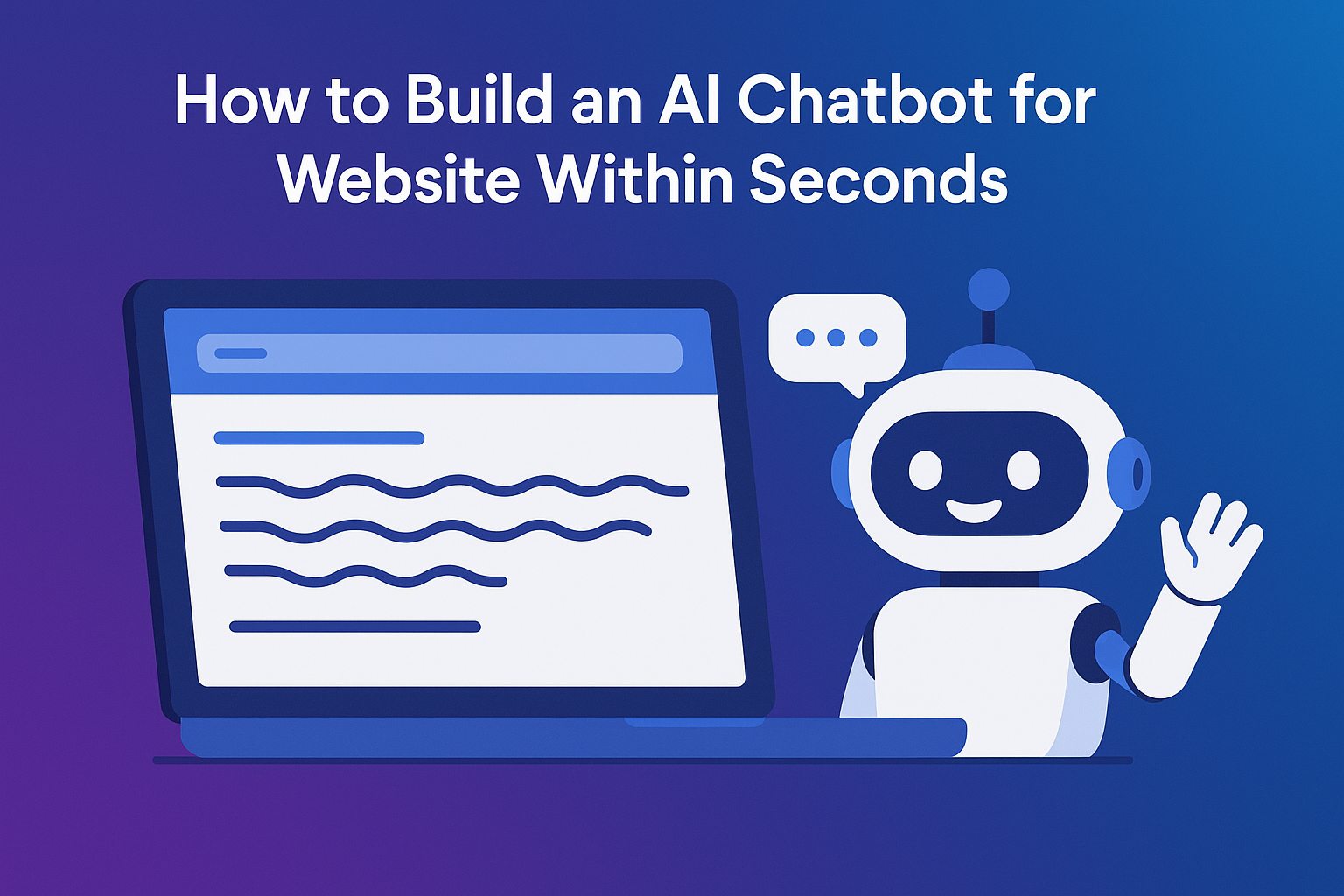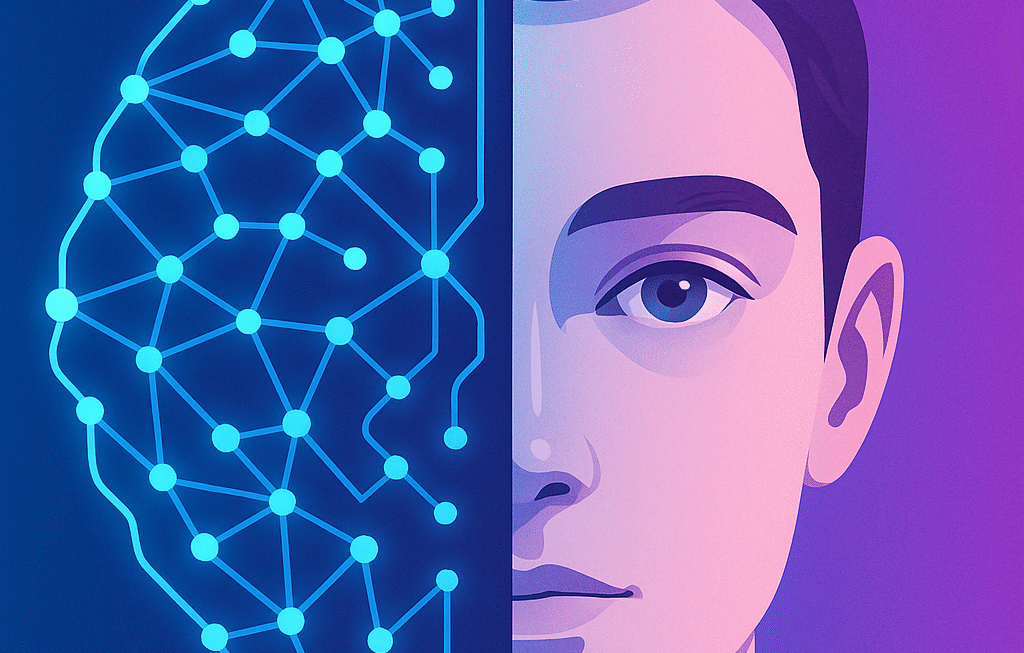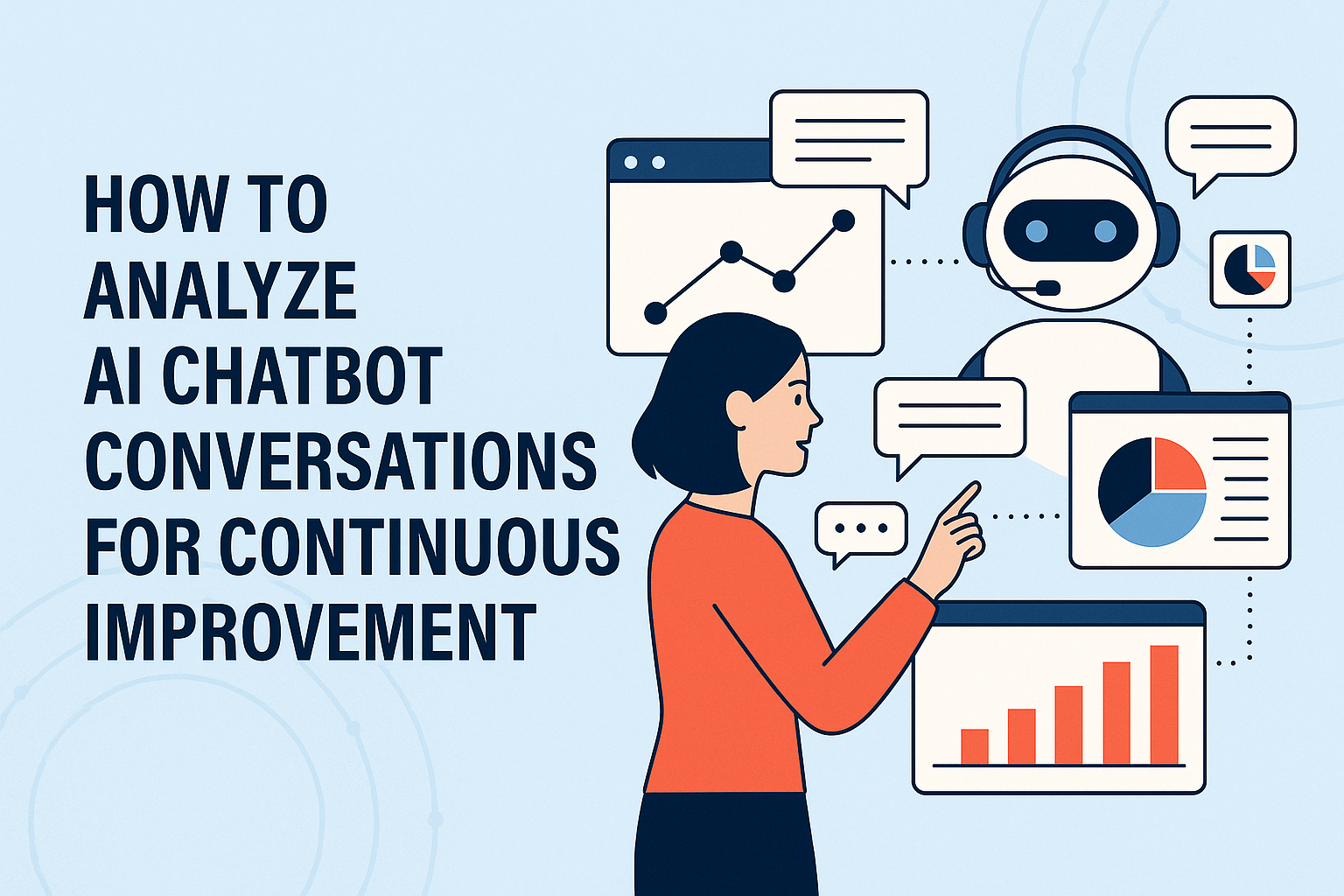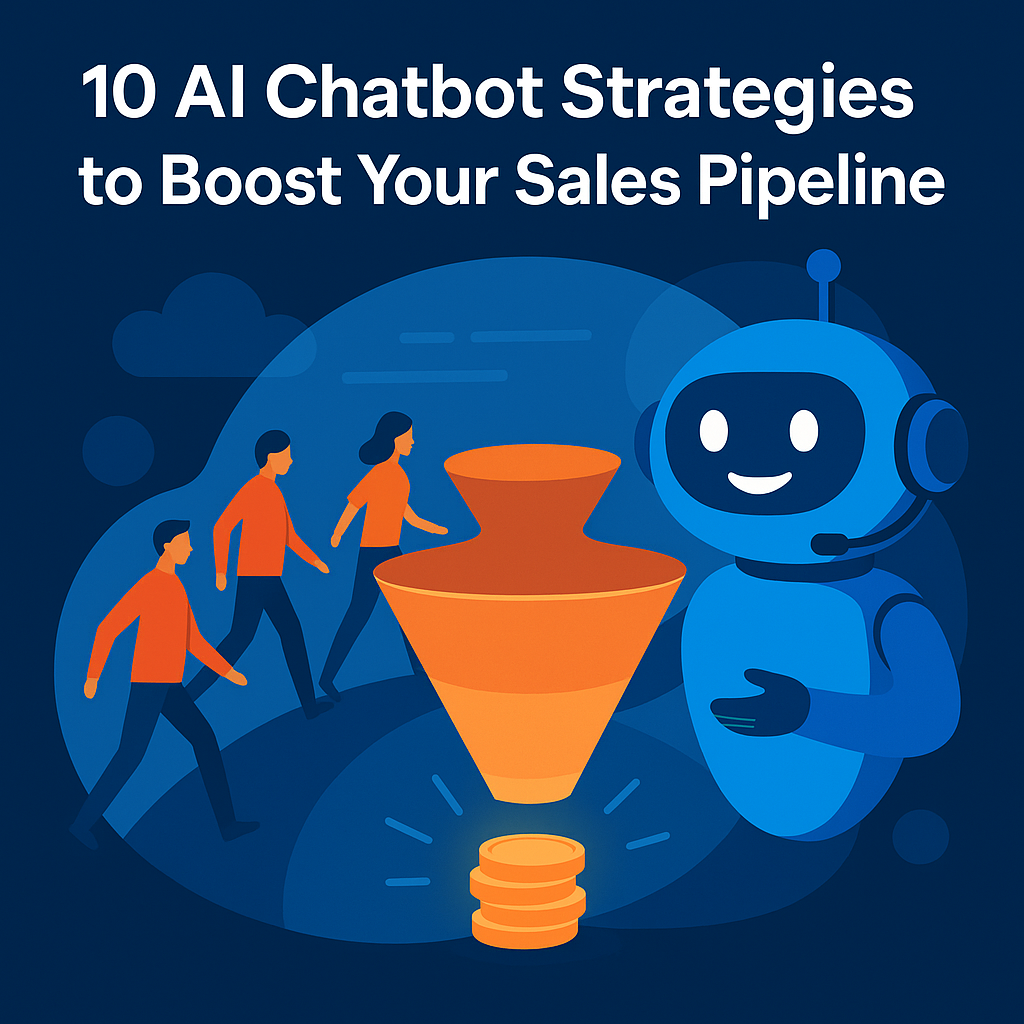Introduction
Imagine this: a new visitor lands on your website, searches for pricing, and leaves after 40 seconds because they couldn’t find answers. That’s a lost lead. For years, the only way to prevent this was through customer support teams or clunky, rule-based chatbots that took weeks to configure.
Today, AI has flipped that script. Modern chatbot platforms let you launch a fully functional AI chatbot in under a minute. No code. No developer bottlenecks. Just paste your URL, pick a role, and embed the snippet.
In this guide, we’ll show you exactly how to do it, why it works so fast, and how to polish your bot in 10 minutes for maximum impact.
Why “Seconds” Is Now Possible
For years, chatbot development required manual training—feeding thousands of intents, crafting decision trees, and writing custom scripts. That’s why most bots felt robotic and outdated.
AI-driven chatbots now skip that complexity thanks to three breakthroughs:
- No-Code Builders → Platforms crawl your website, PDFs, or help center automatically.
- Retrieval-Augmented Generation (RAG) → Ensures the chatbot answers only from your data, not generic AI guesses.
- Instant Embedding → One line of code to place the chatbot widget on any CMS—WordPress, Shopify, Webflow, or custom sites.
📊 Statistic: Gartner predicts that by 2025, 80% of customer interactions will be handled by AI-powered systems, making “instant bots” not just possible, but essential.
Step-by-Step: Build an AI Chatbot in 60 Seconds
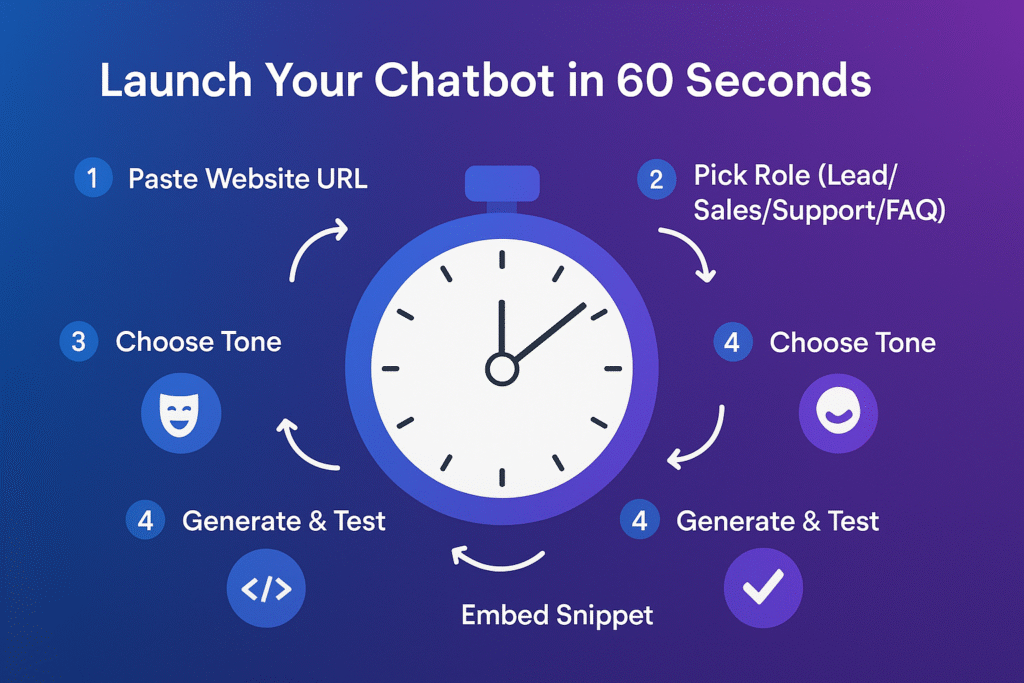
Step 1: Paste Your Website URL
Drop your homepage or help center link. The bot instantly crawls headings, content, and FAQs.
Step 2: Pick a Role
- Lead Capture → Qualifies visitors and collects emails/phone numbers.
- Sales Agent → Promotes relevant benefits and upsells.
- Support Agent → Answers FAQs and provides troubleshooting.
- General FAQ → Acts as a knowledge assistant.
Step 3: Choose Tone
Friendly, professional, casual, or brand-matched. (Tip: paste 100 words of your brand voice for guidance.)
Step 4: Generate & Test
Type in 2–3 real customer questions like “What’s your pricing?” or “How do I cancel my booking?” to validate accuracy.
Step 5: Embed Snippet
Copy the code the builder provided code into your site <head>. Done. Your bot is live.
The 10-Minute Polish That Drives ROI
While a working chatbot can go live instantly, a little fine-tuning separates “just functional” from “business driver.”
1. Train With FAQs
Upload 10–25 customer FAQs directly. This ensures precision in answers.
2. Upload Manuals/Docs
Feed your bot product guides or policy docs—it’ll reference them directly.
3. Define Escalation Rules
When to hand off to email, WhatsApp, or live agents (e.g., billing disputes).
4. Enable Citations
Show “Answer sourced from: Pricing Page” to boost trust.
5. Personalize the Widget
Match colors, welcome message, and CTA to your brand identity.
💡 Example: Domino’s chatbot doesn’t just list menu items—it recalls order history, suggests local promotions, and reorders a pepperoni pizza in 30 seconds without typing a word.
Best Practices & Common Pitfalls
✅ Best Practices
- Keep answers under 120 words.
- Always link source pages.
- Add 1 clear CTA per response (“Book a demo,” “Start free trial”).
- Schedule weekly auto-sync with your content.
❌ Common Pitfalls
- Hallucinations: Fixed by enabling “source-only” mode.
- Off-brand tone: Prevented by pasting a brand voice sample.
- Overloading leads: Avoid 10-question forms; stick to 2 qualifying questions max.
Case Study: Real-World Wins
- Domino’s → Reorders in 30 seconds, driving repeat sales.
- Sephora → Saw a 70% increase in engagement when their bot personalized recommendations.
- Small Business Example → A SaaS startup embedded an AI chatbot on launch day. Within a week, they captured 22% more leads compared to email-only signups.
📌 Quote: “AI chatbots aren’t just answering questions anymore—they’re shaping entire customer journeys.” — Forrester, 2025
Metrics to Track in Week One
To ensure your chatbot is working, measure these KPIs:
- Engagement Rate: Chats ÷ Widget views → Target: 8–15%
- Lead Capture Rate: Leads ÷ Chats → Target: 10–25%
- Support Deflection: Issues solved without human → Target: 25–40%
- Escalation Accuracy: Was the handoff at the right moment?
📊 Add a simple dashboard or chart showing “Week 1 Chatbot KPIs.”
Conclusion
Building an AI chatbot no longer requires weeks of coding or IT resources. In 60 seconds, you can have a working bot live on your site. In 10 minutes, you can refine it into a true growth engine that captures leads, supports customers, and drives conversions.
Every day without a chatbot = lost opportunities.
Ready to try? Sparkagentai.com, generate, and go live today. 🚀
Frequently Asked Questions (FAQ)
Q1. Can I really build an AI chatbot in under a minute?
Yes. Modern no-code chatbot builders crawl your website or uploaded documents instantly. Once you paste the embed snippet into your site, the chatbot is live within seconds.
Q2. Do I need coding skills to add a chatbot to my website?
No. You just copy the chatbot script provided and paste it into your website’s <head> section or add it through Google Tag Manager. Platforms like WordPress, Shopify, and Webflow support this seamlessly.
Q3. What types of AI chatbots can I create quickly?
You can launch bots for:
- Lead capture (collect emails, phone numbers)
- Sales assistance (contextual product pitches)
- Support/FAQ handling (policies, troubleshooting)
- General knowledge (docs, guides, manuals)
Q4. How accurate will the chatbot’s answers be?
Accuracy depends on the quality of the content you feed it. For best results:
- Upload your FAQs and product docs
- Enable “source-only” answers
- Turn on citations so the chatbot shows where the answer came from
Q5. Can I control what the chatbot should not answer?
Yes. You can set up blocklists and escalation rules. For example, if a visitor asks about future roadmap or sensitive topics, the bot can redirect them to a human agent.
Q6. How do I keep the chatbot updated?
Most builders allow auto-sync with your help center, website, or document repository. Alternatively, you can schedule weekly re-crawls or upload new files anytime.
Q7. Will this work on any website platform?
Yes. Whether you’re using WordPress, Shopify, Webflow, or a custom-coded site, the chatbot can be embedded using the snippet provided by your builder.
Q8. What metrics should I track after launch?
Key KPIs include:
Escalation accuracy
Engagement rate (chats ÷ widget views)
Lead capture rate
Support deflection %

